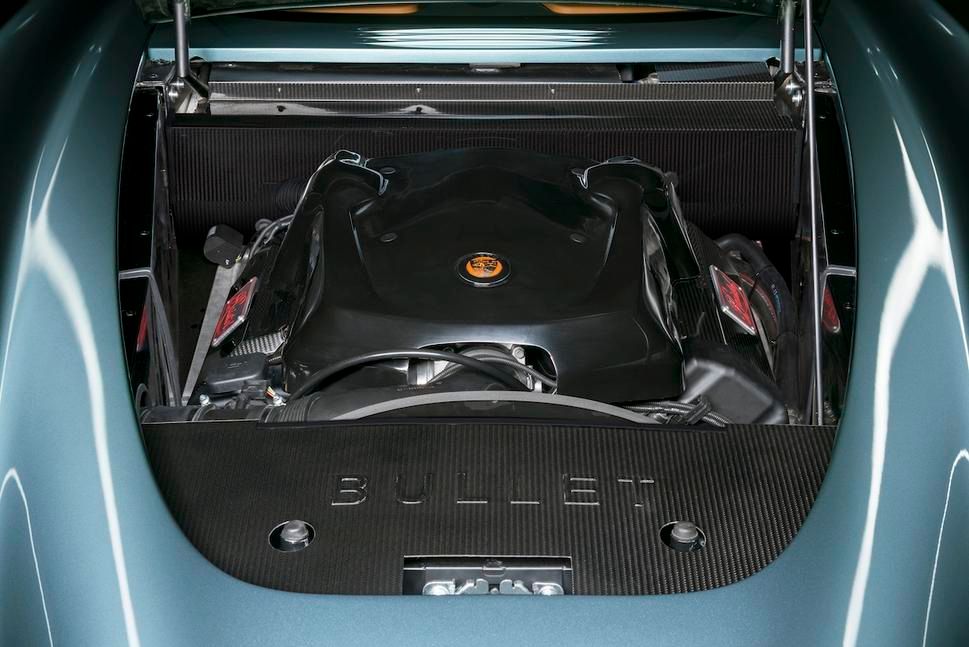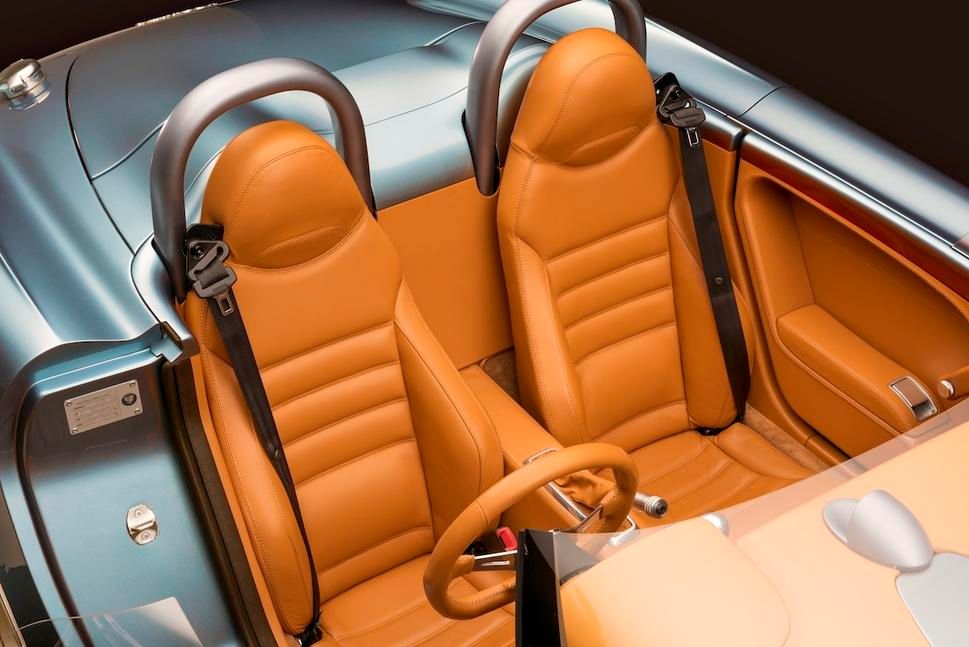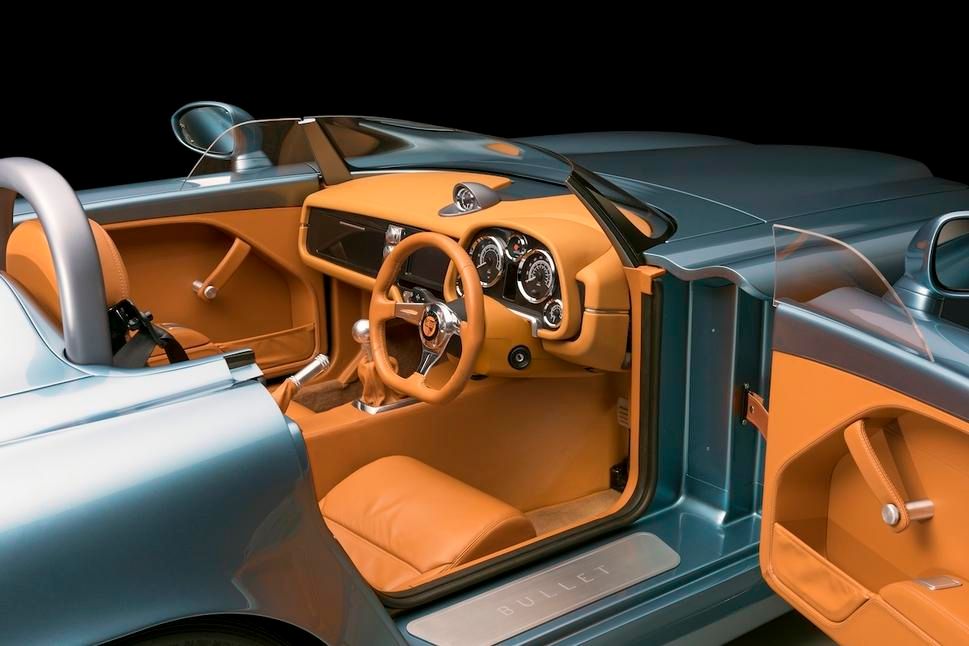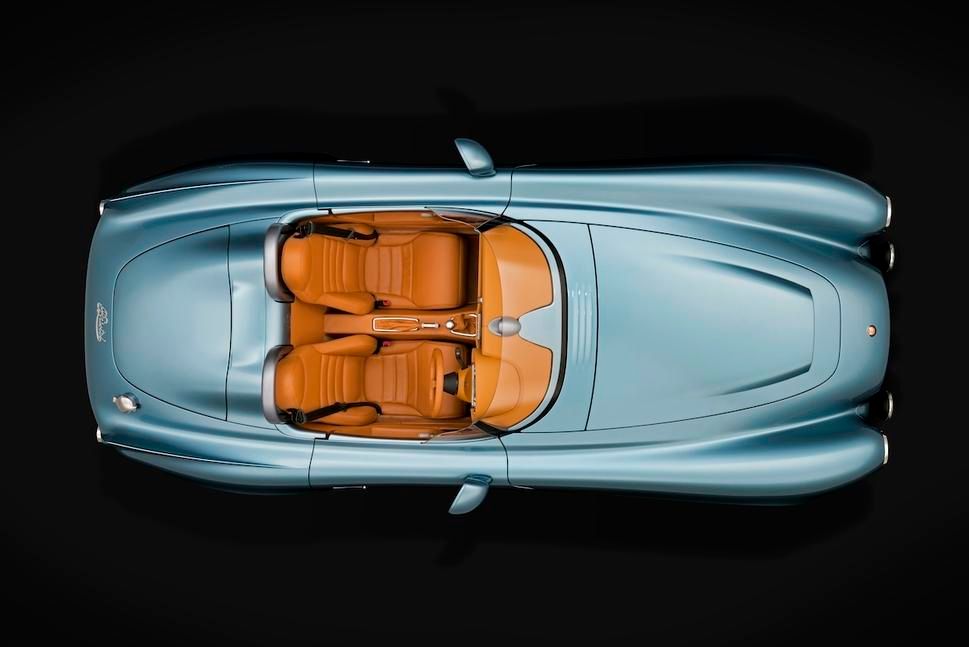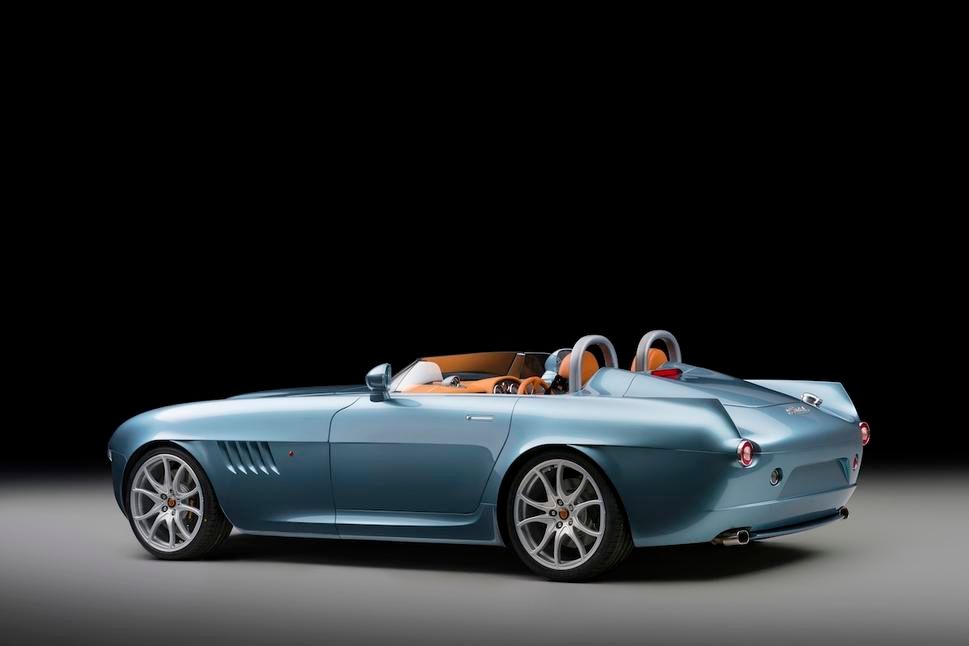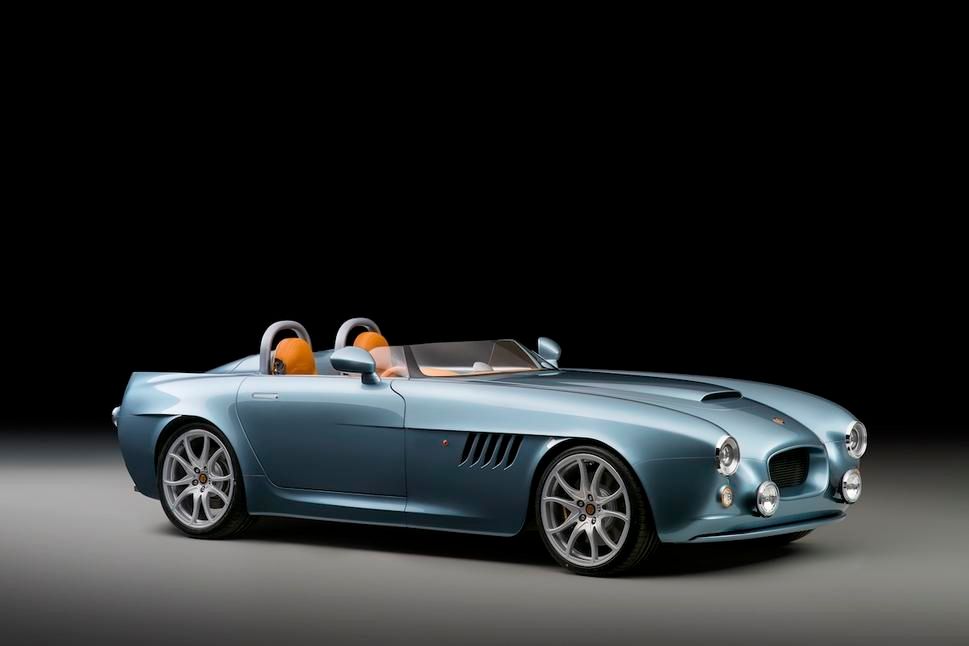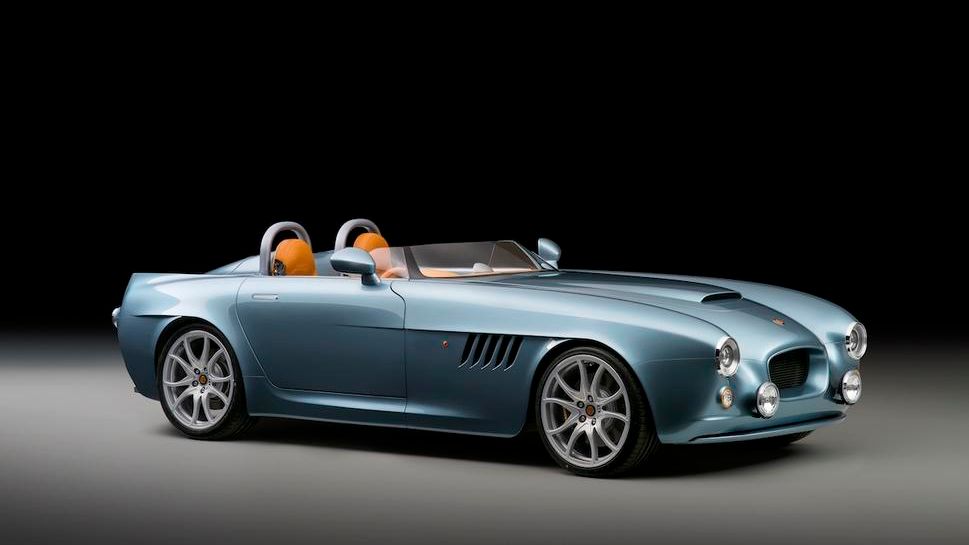British firm Bristol has just announced it will debut a brand-new sports car at the Salon Prive on September 1. Launched to celebrate the founding of Bristol Cars 70 years ago, it goes by the name Bullet and it's the company's first new design in 12 years. Initially announced in 2014 as "Project Pinnacle," the Bullet morphed into a neo-retro speedster with a luxurious interior and BMW power.
For the uninitiated, Bristol Cars Limited was founded in 1945, when the Bristol Aeroplane Company created its very own car division under Frazer Nash. After merging with Bristol Siddeley Engines (which was later purchased by Rolls-Royce), Bristol was purchased by Sir George White, who in 1973 sold his majority shareholding to Tony Crook, who remained in control of the company in 1997.
Crook transfered Bristol Cars ownership to Toby Silverton and the Tavistock group in 2002 and nine years later the company was placed into administration due to financial problems. A month later it was ourchased by Frazer-Nash Research. During its 70-year life, Bristol Cars launched Type 400 to Type 412 (1946 to 1975), but production slowed down to only to only four nameplates between 1993 and 2011. It's last production model, the Fighter, came to be in 2004. Much like every model since 1961, the Fighter had a Chrysler engine (based on the Dodge Viper's) under the hood.
Twelve years have passed and the Bristol is back with a promising roadster.
"The Bullet celebrates 70 years of design and innovation at Bristol Cars. This unique speedster sets the tone for the future of Bristol Cars – with a focus on luxury, performance and elegance it really is the ultimate driver’s car," said Julian Ramshaw, general manager of Bristol Cars.
Continue reading to learn more about the 2017 Bristol Bullet.
2017 Bristol Bullet
- Make: Array
- Model: 2017 Bristol Bullet
- [do not use] Vehicle Model: Array
Exterior
The styling of the Bullet is of the neo-retro variety. The overall design is heavily based on the gorgeous cues of 1960s European sports cars and season with modern features. On top of that, it has a sexy speedster stance thanks to its low windscreen, tiny side windows, and large rollover hoops behind the seats.
Penned by an unnamed Italian design house, it features many of the trademark cues that were popular in the 1960s. There's round headlamps, turn signals, and foglamps , a large grille in the middle, a big scoop on the long engine hood, and muscular front fenders. The latter feature deep gills behind the wheels -- as seen on iconic cars such as the Ferrari GTO and Shelby Cobra -- and a prominent character line that runs from the wheel arches into the doors.
A similar feature runs from the rear wheel arches toward the round taillights, yet another elements that pays homage to classic sports cars. The rear fascia is also highlighted by large finds on each fender, flying buttresses behind the rollover hoops, and a clean bumper with a dual exhaust layout.
Modern styling cues include the side mirrors, the concealed door handles, and the twin-five-spoke rims wrapped in low-profile tires. Although Bristol wouldn't reveal which design house crafted the Bullet, it definitely looks to be the work of Pininfarina.
Styling-aside, the Bullet is as modern as they get when it comes to materials. While the chassis is a classic bonded-aluminum element, the body is made entirely from carbon-fiber. As far as dimensions go, it's about the side of a Porsche 718 Boxster at 4.2 meters long and 1.86 meters wide (165.35 and 73.22 inches, respectively).
Interior
Bristol didn't have much to say about the Bullet's interior, but the pictures reveal a classic configuration with light-colored leather and plenty of machined metal details. Nearly everything is wrapped in leather, including the center console and the door panels, while the instrument cluster and steering wheel feature chrome detailing. The instrument cluster comes with analogue clocks for classic appearance, while an extra gauge mounted atop the dash gives the cabin a sportier feeling. The door panels were designed with lightness in mind, while the upper sections are finished in body color for a proper roadster look.
While most details pay tribute to the good old 1960s, the flat-bottom steering wheel, the gloss black glove compartment, and the infotainment screen bring the car into the 21st century. The WiFi connectivity, digital radio and smartphone connectivity gives drivers the modern amenities they expect from a modern vehicle. Bristol also claims that customers will be able to customize the cabin, but gives no specific details as to what to expect.
Drivetrain
Although initial rumors said that the Bullet will get a hybrid drivetrain, Bristol decided to go with an all gasoline engine. The company's choice is a BMW-sourced 4.8-liter V-8. If it sounds familiar, it's because it powered numerous Bimmer between 2003 and 2010, including the 5 Series, 6 Series, 7 Series, and the X5. It was also used by Wiesmann in its GT sports car. Although BMW replaced it with a new engine in 2010, the 4.8-liter V-8 is still being used by Morgan in the Aero 8 and higher performance models based on it.
In the Bullet, the unit (which was modified by Bristol) cranks out 370 horsepower and uses a ZF six-speed transmission to send all that oomph to the rear wheels. Although 370 ponies isn't exactly mind-blowing compared to what the market has to offer nowadays, it's pretty impressive when paired with the fact that the Bullet tips the scales at only 1,100 kg (2,425). As a result, the roadster needs 3.8 seconds to hit 62 mph, which is nothing to sneeze at. Top speed is electronically limited to 155 mph.
Details are still scant as of this writing, but we do know that the Bullet features Multimatic coilover suspension and an AP Racing braking system. This should make it suitable for fun at the track.
Bristol reportedly wants to expand its lineup with a hybrid drivetrain adapted from sistem brand Frazer-Nash, which builds gasoline-electric cabs and buses, but there's no word whether the new tech will find its way into the Bullet or a brand-new model.
Prices
Specific pricing information has yet to be released, but the Bullet is estimated to cost around £250,000, which convers to about $330,000 as of August 2016. That's quite expensive for a car that lacks the brand cachet of exotic marques, but not so over the top given that production will be limited to just 70 units and all cars will be hand built. Production is estimated to begin in early 2017. Unfortunately, the Bullet won't be sold in the United States.
Competition
Puritalia 427
Today's market isn't brimming with roadsters that feature neo-retro styling, but there at least one car that can compete against the Bristol Bullet. It goes by the name Puritalia 427, it is built in Italy, and looks like a modern rendition of the Shelby Cobra. Although it has plenty of retro cues in its design, it looks a bit more modern than the Bullet and lacks the speedster windscreen. Under the hood, the 427 also comes with a V-8, in the form of a 5.0-liter unit sourced from the Ford Mustang GT. It is available in two flavors. There’s a naturally aspirated version with 445 horsepower and 390 pound-feet of torque and a supercharged variant that cranks out 605 horses and 472 pound-feet of twist. Performance figures are not available, but the supercharged version should be able to hit 62 mph in around 3.5 seconds. Pricing starts from €180,000 (about $201,000) before taxes in Europe and production is limited to 427 units.
Find out more about the Puritalia 427 here.
Bilenkin Vintage
The Vintage might not be a convertible, but it also features a neo-retro design that makes it a 1960s tribute vehicle. It even has a pair of fins around back and a two-tone paint scheme that give it a classic appearance. Underneath, the Bilenkin is a BMW E92 M3 and carries the German coupe's 4.0-liter V-8 engine. The unit cranks out the standard 414 horsepower and 295 pound-feet of torque. Performance figures are unknown, but if the E92-generation M3 is any indication, the Vintage should be slowest of the bunch, with a 0-to-62 mph sprint at around 4.6 seconds. Another thing that sets the Bilenkin apart is its fancy interior, which comes with paisley fabric, shag carpeting, a crystal shift knob, and optional gold and diamond inserts. Pricing starts from €130,000 (around $145,200), which likely doesn't include the price of the donor BMW E92 M3.
Read more about the Bilenkin Vintage here.
Conclusion
I obviously can't speak for everyone, but I'm certainly glad that one of Britain's historic brands is back with a new model. The Bullet is definitely not for everyone due to its neo-retro design and pricing, but it's a big step forward for a small company that wants to rebound after decades of hardship. On the flipside, it's too early to make predictions and what could be a successful return could very well become a fiasco if things don't go according to plan. For now we have an awesome project that makes enthusiasts smile. Hopefully the Bullet will become a proper production car and fund Bristol's next projects.


